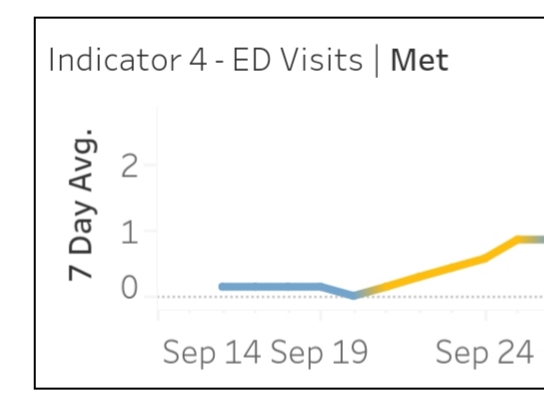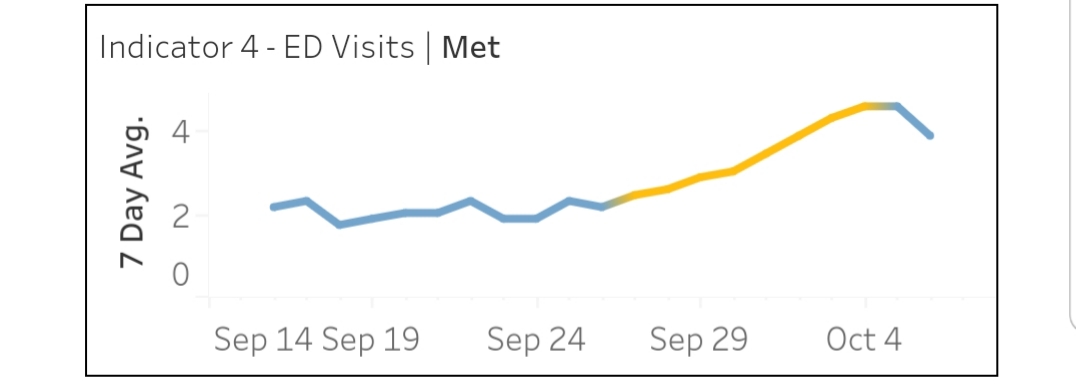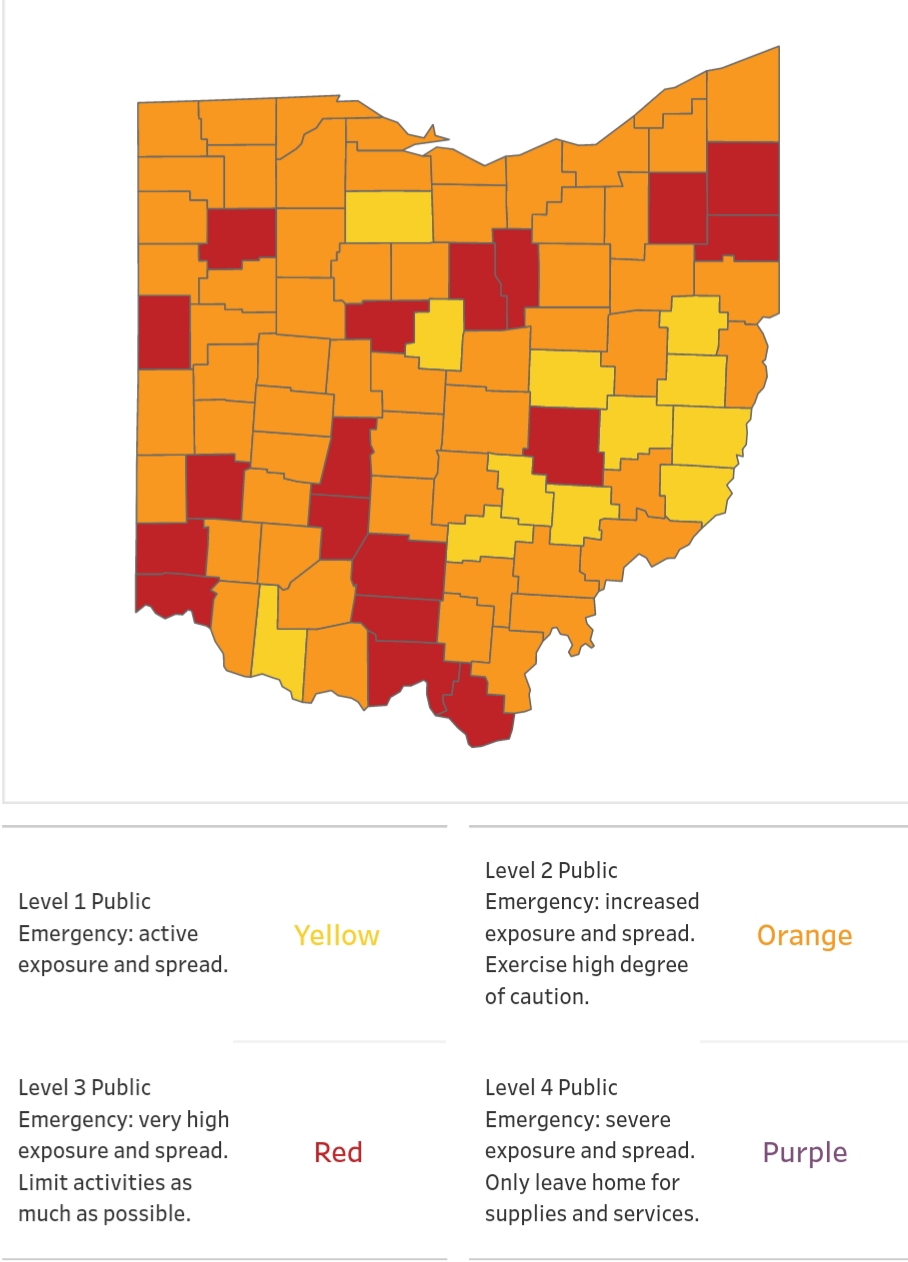This is the sixth story in and eight-part series on the Ohio Public Health Advisory System (OPHAS). The system assigns one of four colors to each of Ohio’s 88 counties based on the level of COVID exposure and spread.
OPHAS is a supplement to the numerous statewide COVID mandates and is supposed to be a data-driven framework that gives local leaders a tool for use in deciding local and county school, business and other public policies.
OPHAS is comprised of seven indicators:
- new cases per capita;
- sustained increase in new cases;
- proportion of cases not in congregate setting;
- sustained increase in Emergency Department (ED) visits for COVID-like illness;
- sustained increase in outpatient visits for COVID-like illness;
- sustained increase in new COVID hospital admissions;
- Intensive Care Unit (ICU) bed occupancy.
Indicator four, sustained increase in ED visits for COVID-like illness will negatively affect a county’s risk rating if there is an increasing trend of at least five consecutive days in the number of visits to the emergency department with COVID-like illness or diagnosis over the past 3 weeks.
According to the Summary of Alert Indicators found on the Ohio COVID site, the indicator shows the health care seeking behavior of the population and a sense of how concerned residents are about their current health status and the virus.
In an email to The Ohio Star, Ohio Department of Health Press Secretary Melanie Amato pointed out that “indicators 4 and 5 (outpatient and ED visits) rely on more timely data and can provide an early indicator that a change in trends is occurring.”
Tripping the indicator takes only a fractional increase. Madison County visits barely bumped up September 21 – September 25 from 0.14 to .86. This increase was enough to flip the switch. Madison County has a population of 44,731.

The lack of magnitude control – albeit not as glaring – can also be seen in Ross County where the measure was flipped September 25 – August 4 when ED visits went from 2.1 to 4.5. Ross County has a population of 76,666.

During a press briefing in July, DeWine and OPHAS co-creator Dr. Andrew Thomas likened the color-coded map to an early weather warning system designed to aid Ohio counties in seeing surges before they occur.
However, for weeks Governor DeWine has pointed to OPHAS as proof that COVID is spreading in Ohio, which is counter to the way the system was initially introduced.
Despite claims that COVID is spreading, early warnings from the advisory system are not producing increases in cases, hospitalizations or deaths. To use a weather analogy – tornadoes are not touching down despite weather warning systems and forecasts.
According to Ohio COVID dashboard, cases in Ohio peaked on July 13, hospitalizations on July 12 and deaths on April 28.
Yet the Ohio Education Association (OEA) released a position statement on July 28 outlining the union’s stance on school openings that states: “Under Ohio’s warning system, OEA believes that any school or campus building located in a county designated as Level 4 (purple) or Level 3 (red) must remain closed to in-person instruction.”
At the end of July, DeWine demanded county fairs to conduct only junior fair events and cited as a reason the increased community spread among fairgoers.
The Ohio Liquor Control Board referenced the perceived spread indicated by OPHAS in issuing its emergency rule to prohibit the sale of alcohol past 10:00 p.m. and onsite consumption by 11:00 p.m.
However, last week Governor DeWine said red and purple counties are not going to be subject to additional statewide regulations. But even if more health orders are not produced as a result of OPHAS, it is evident that other governing boards, bodies and institutions are basing decisions on the system.
This is particularly true in school districts throughout the state. Last week The Star reported that schools in Richland County were preparing for remote learning in anticipation the Governor was going to color the county purple.
July 18 CDC Director Robert Redfield said that there is no data to support the notion kids are getting severely ill from COVID or that they are transmitting to teachers. Last week The Atlantic published an article backed by research reporting kids contracting COVID at a rate of 0.13 and staff at a rate of 0.25.
As we go deeper into the fall when allergies, colds and flu cases skyrocket it will be less clear if we are battling COVID or traditional sicknesses.
Amato said “It will be more difficult to differentiate COVID-19 and other respiratory illnesses, but the hope is that by following guidance on social distancing and mask wearing, other respiratory illnesses which are generally more difficult to transmit between individuals, will be mitigated to some degree. “
– – –
Jack Windsor is Managing Editor and an Investigative Reporter at The Ohio Star. Windsor is also an Investigative Reporter at WMFD-TV. Follow Jack on Twitter. Email tips to [email protected].






